Best books on Artificial Intelligence for beginners with PDF download
by Ready For AI · Published · Updated
Whether you are a beginner or an advanced learner, reading these best books on artificial intelligence can be a great way to gain a deeper understanding of the field. There are numerous books available that cover various aspects of AI, and some of the best ones for beginners include "Artificial Intelligence: A Modern Approach" by Stuart Russell and Peter Norvig, "Hands-On Machine Learning with Scikit-Learn, Keras, and TensorFlow" by Aurelien Geron, and "Deep Learning" by Ian Goodfellow, Yoshua Bengio, and Aaron Courville. Many of these books are available as free PDF downloads, making them accessible to anyone with an internet connection.

The classic Artificial Intelligence teaching material
Artificial intelligence is a branch of computer science that attempts to understand the essence of intelligence and produce a new intelligent machine that responds in a manner similar to human intelligence. Research in this area includes robotics, speech recognition, image recognition, Natural language processing and expert systems. Since the birth of artificial intelligence, the theory and technology have become more and more mature, and the application fields have been expanding. It is conceivable that the technological products brought by artificial intelligence in the future will be the “container” of human wisdom. Artificial intelligence can simulate the information process of human consciousness and thinking. Artificial intelligence is not human intelligence, but it can be like human thinking, and it may exceed human intelligence.
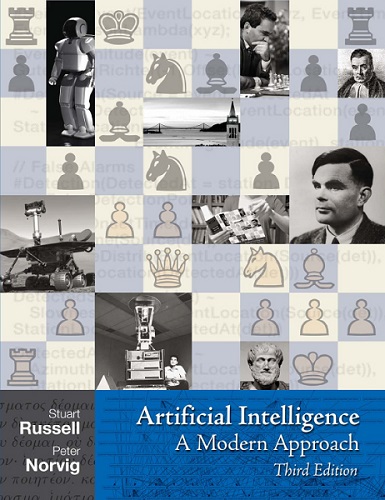
Artificial Intelligence: A Modern Approach
Artificial Intelligence: A Modern Approach (AIMA) is a university textbook on artificial intelligence, written by Stuart J. Russell and Peter Norvig. It was first published in 1995 and the third edition of the book was released 11 December 2009. It is used in over 1350 universities worldwide and has been called "the most popular artificial intelligence textbook in the world". It is considered the standard text in the field of artificial intelligence. The book is intended for an undergraduate audience but can also be used for graduate-level studies with the suggestion of adding some of the primary sources listed in the extensive bibliography.
Authoritative Learning OpenCV Guide
Computer vision is everywhere — in security systems, manufacturing inspection systems, medical image analysis, Unmanned Aerial Vehicles, and more. It helps robot cars drive by themselves, stitches Google maps and Google Earth together, checks the pixels on your laptop’s LCD screen, and makes sure the stitches in your shirt are OK.
OpenCV provides an easy-to-use computer vision infrastructure along with a comprehensive library containing more than 500 functions that can run vision code in real time. With Learning OpenCV, any developer or hobbyist can get up and running with the framework quickly, whether it’s to build simple or sophisticated vision applications.

Learning OpenCV 3: Computer Vision in C++ with the OpenCV Library
Learning OpenCV puts you right in the middle of the rapidly expanding field of computer vision. Written by the creators of OpenCV, the widely used free open-source library, this book introduces you to computer vision and demonstrates how you can quickly build applications that enable computers to "see" and make decisions based on the data. With this book, any developer or hobbyist can get up and running with the framework quickly, whether it's to build simple or sophisticated vision applications.
Classic textbook for the foundation of deep learning
Deep learning is a form of machine learning that enables computers to learn from experience and understand the world in terms of a hierarchy of concepts. Because the computer gathers knowledge from experience, there is no need for a human computer operator to formally specify all the knowledge that the computer needs. The hierarchy of concepts allows the computer to learn complicated concepts by building them out of simpler ones; a graph of these hierarchies would be many layers deep. This book introduces a broad range of topics in deep learning.
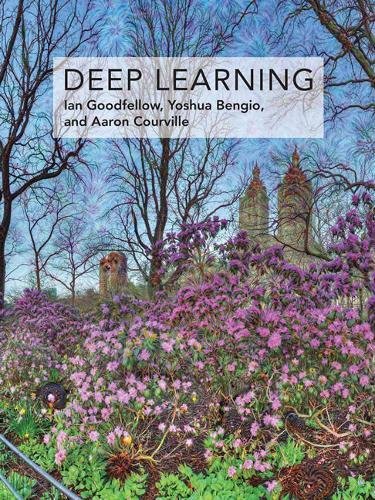
Deep Learning
The text offers mathematical and conceptual background, covering relevant concepts in linear algebra, probability theory and information theory, numerical computation, and machine learning. It describes deep learning techniques used by practitioners in industry, including deep feedforward networks, regularization, optimization algorithms, convolutional networks, sequence modeling, and practical methodology; and it surveys such applications as natural language processing, speech recognition, computer vision, online recommendation systems, bioinformatics, and videogames. Finally, the book offers research perspectives, covering such theoretical topics as linear factor models, autoencoders, representation learning, structured probabilistic models, Monte Carlo methods, the partition function, approximate inference, and deep generative models.
Excellent machine learning textbook with rich examples
Throughout the book, Géron emphasizes practical examples and hands-on coding exercises. He provides clear explanations of the concepts and algorithms used in each example, and the code is well-documented and easy to follow.
Some of the topics covered in the book include:
- Linear regression
Classification algorithms (e.g., logistic regression, SVMs, decision trees, random forests) - Clustering algorithms (e.g., K-means, DBSCAN)
- Neural networks (e.g., multilayer perceptrons, convolutional neural networks, recurrent neural networks)
- Deep learning techniques (e.g., dropout, batch normalization)
- Reinforcement learning
Overall, “Hands-On Machine Learning with Scikit-Learn, Keras, and TensorFlow” is an excellent resource for anyone looking to learn machine learning through practical examples and hands-on coding exercises. It’s a great choice for beginners as well as experienced practitioners who want to deepen their understanding of the field.
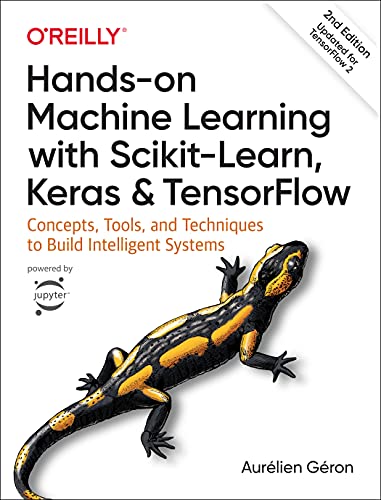
Hands-On Machine Learning with Scikit-Learn, Keras, and TensorFlow
Hands-On Machine Learning with Scikit-Learn, Keras, and TensorFlow by Aurélien Géron is a popular and highly regarded book on machine learning. The book is designed for beginners and intermediate-level practitioners who want to gain practical experience in building machine learning models using Scikit-Learn, Keras, and TensorFlow. The book starts with an introduction to machine learning and the fundamentals of Scikit-Learn, a popular Python library for machine learning. It then progresses to more advanced topics such as deep learning, convolutional neural networks, and recurrent neural networks using the Keras and TensorFlow libraries.
Textbook for the application of Bayesian decision theory
The dramatic growth in practical applications for machine learning over the last ten years has been accompanied by many important developments in the underlying algorithms and techniques. For example, Bayesian methods have grown from a specialist niche to become mainstream, while graphical models have emerged as a general framework for describing and applying probabilistic techniques. The practical applicability of Bayesian methods has been greatly enhanced by the development of a range of approximate inference algorithms such as variational Bayes and expectation propagation, while new models based on kernels have had a significant impact on both algorithms and applications.
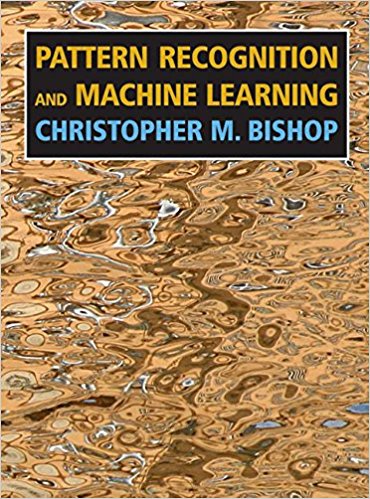
Pattern Recognition and Machine Learning
This completely new textbook reflects these recent developments while providing a comprehensive introduction to the fields of pattern recognition and machine learning. It is aimed at advanced undergraduates or first-year PhD students, as well as researchers and practitioners. No previous knowledge of pattern recognition or machine learning concepts is assumed. Familiarity with multivariate calculus and basic linear algebra is required, and some experience in the use of probabilities would be helpful though not essential as the book includes a self-contained introduction to basic probability theory. The book is suitable for courses on machine learning, statistics, computer science, signal processing, computer vision, data mining, and bioinformatics. Extensive support is provided for course instructors, including more than 400 exercises, graded according to difficulty. Example solutions for a subset of the exercises are available from the book web site, while solutions for the remainder can be obtained by instructors from the publisher.
Definitive text in the field of reinforcement learning
“Reinforcement Learning” is widely regarded as a definitive text in the field of reinforcement learning, and has been used as a textbook in many AI and machine learning courses. It is a valuable resource for anyone interested in learning about reinforcement learning and its applications.
One of the strengths of the book is its clear and accessible writing style, which makes it suitable for both undergraduate and graduate students, as well as researchers and practitioners in the field. The book includes many examples and illustrations to help readers understand the concepts and algorithms, and provides Python code for implementing many of the algorithms discussed.
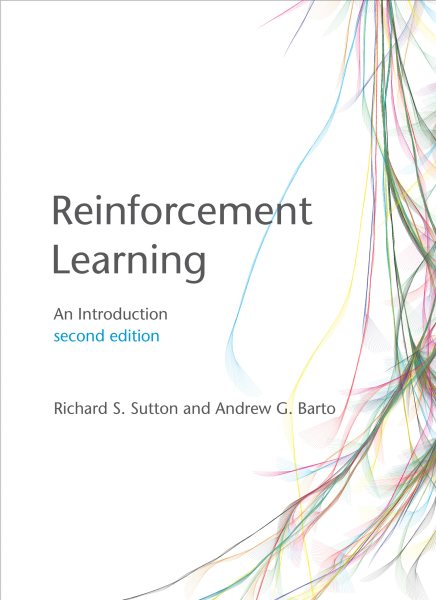
Reinforcement Learning: An Introduction
Reinforcement learning is a subfield of machine learning that involves training an agent to make decisions based on trial-and-error experience in an environment, with the goal of maximizing a reward signal. The book covers the fundamental concepts and algorithms of reinforcement learning, including value-based methods, policy-based methods, and model-based methods. It also discusses advanced topics such as exploration, function approximation, and deep reinforcement learning.
A comprehensive introduction to language processing technology in Artificial Intelligence
Natural language processing (NLP) is an area of computer science and artificial intelligence concerned with the interactions between computers and human (natural) languages, in particular how to program computers to process and analyze large amounts of natural language data.Challenges in natural language processing frequently involve speech recognition, natural language understanding, and natural language generation.
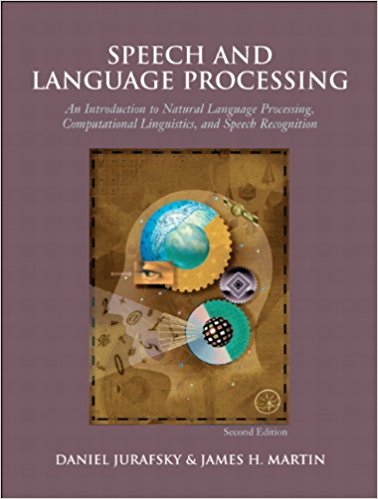
Speech and Language Processing
The first of its kind to completely cover language technology – at all levels And with all modern technologies - this book takes an empirical approach to the subject, based on applying statistical and other machine-learning algorithms to large corporations. Builds each chapter around one or more worked examples demonstrating the main idea of the chapter, usingthe examples to Adding coverage of language modeling, formal topics, speech answering and summarization, advanced topics in speech recognition, speech synthesis, formal grammars, statistical parsing, machine translation, and Dialog processing. A useful reference for professionals in any of the areas of s Peech and language processing.
Pioneering book of Artificial Intelligence philosophy
Artificial intelligence has close connections with philosophy because both share several concepts and these include intelligence, action, consciousness, epistemology, and even free will. Furthermore, the technology is concerned with the creation of artificial animals or artificial people (or, at least, artificial creatures) so the discipline is of considerable interest to philosophers. These factors contributed to the emergence of the philosophy of artificial intelligence. Some scholars argue that the AI community’s dismissal of philosophy is detrimental.
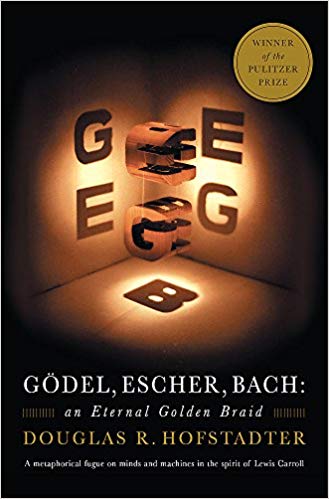
Gödel, Escher, Bach: An Eternal Golden Braid
Douglas Hofstadter's book is concerned directly with the nature of “maps” or links between formal systems. However, according to Hofstadter, the formal system that underlies all mental activity transcends the system that supports it. If life can grow out of the formal chemical substrate of the cell, if consciousness can emerge out of a formal system of firing neurons, then so too will computers attain human intelligence. Gödel, Escher, Bach is a wonderful exploration of fascinating ideas at the heart of cognitive science: meaning, reduction, recursion, and much more.
Artificial Intelligence and Futurology
Kurzweil has written several futurology books including The Age of Intelligent Machines (1990), The Age of Spiritual Machines (1999) and The Singularity is Near (2005). In his books he develops the law of accelerating returns. The law is similar to Moore’s Law, the persistent doubling in capacity of computer chips, but extended to all “human technological advancement, the billions of years of terrestrial evolution” and even “the entire history of the universe”.
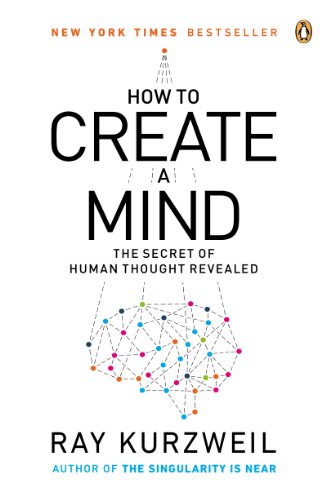
How to Create a Mind: The Secret of Human Thought Revealed
The book explores the implications of his theory for the development of artificial intelligence, arguing that it is possible to create machines that can think and learn like humans, and that this will lead to a revolution in the way we live and work. And it is written in a clear and engaging style, and includes numerous examples and illustrations to help readers understand the concepts presented. It is recommended for anyone interested in the intersection of neuroscience and artificial intelligence, and for anyone interested in the future of technology and its impact on society.
Possible threats and risks of Artificial Intelligence
It is unknown whether human-level artificial intelligence will arrive in a matter of years, later this century, or not until future centuries. Regardless of the initial timescale, once human-level machine intelligence is developed, a “superintelligent” system that “greatly exceeds the cognitive performance of humans in virtually all domains of interest” would, most likely, follow surprisingly quickly. Such a superintelligence would be very difficult to control or restrain.
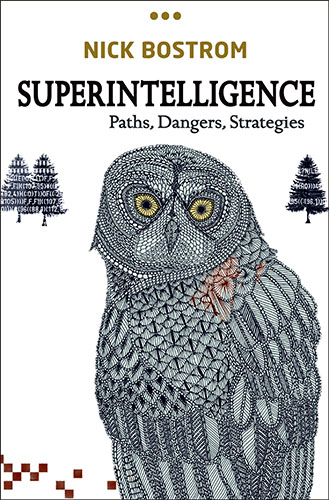
Superintelligence: Paths, Dangers, Strategies
The author argues that the development of superintelligent AI is not only possible, but likely in the near future. He explores the different paths that could lead to the development of superintelligent AI, including the use of advanced machine learning techniques, the development of brain emulation technology, and the creation of self-improving AI systems. The book is written in a clear and accessible style, and includes numerous examples and thought experiments to help readers understand the complex concepts presented. It is recommended for anyone interested in the intersection of AI and ethics, and for anyone interested in the future of technology and its impact on society.
The impact of Artificial Intelligence on human life
We can positing a scenario in which AI has exceeded human intelligence and become pervasive in society. There will be different stages of human life since its inception: Life 1.0 referring to biological origins, Life 2.0 referring to cultural developments in humanity, and Life 3.0 referring to the technological age of humans. Emerging technology such as artificial general intelligence that may someday, in addition to being able to learn, be able to also redesign its own hardware and internal structure.
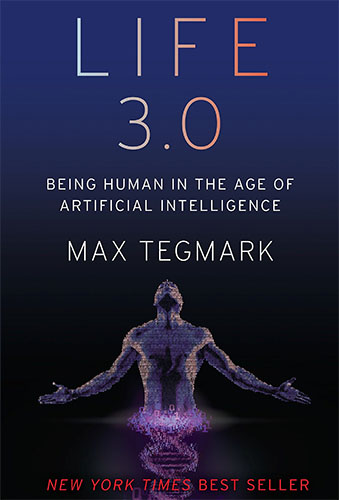
Life 3.0: Being Human in the Age of Artificial Intelligence
Life 3.0 is a book by Swedish-American cosmologist Max Tegmark from MIT. Life 3.0 discusses Artificial Intelligence and its impact on the future of life on Earth and beyond. Examining a range of possible future scenarios, Tegmark lays out what we can do in the present to ensure that humanity advances alongside our technology. “I think if we succeed in building machines that are smarter than us in all ways, it’s going to be either the best thing ever to happen to humanity or the worst thing,” says Tegmark.


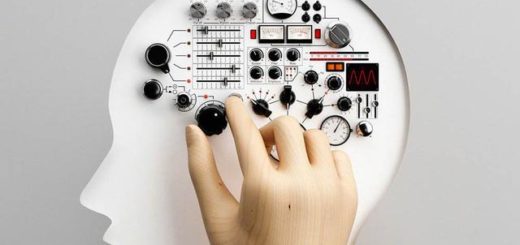
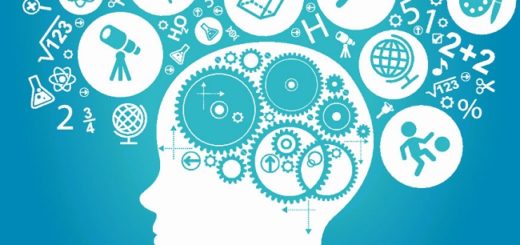
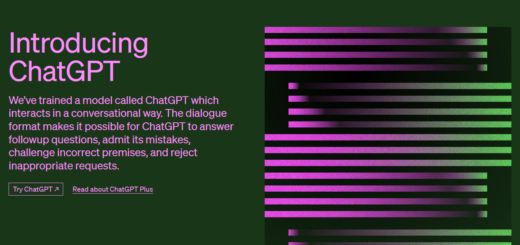

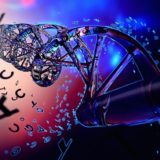
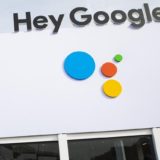

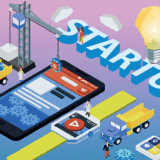
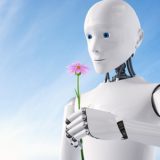
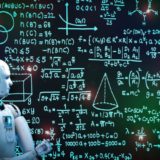
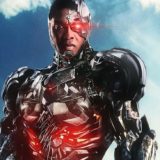

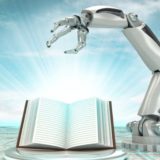



EXCELLENT SITE.
Thank you soooo much for providing all these materials for free